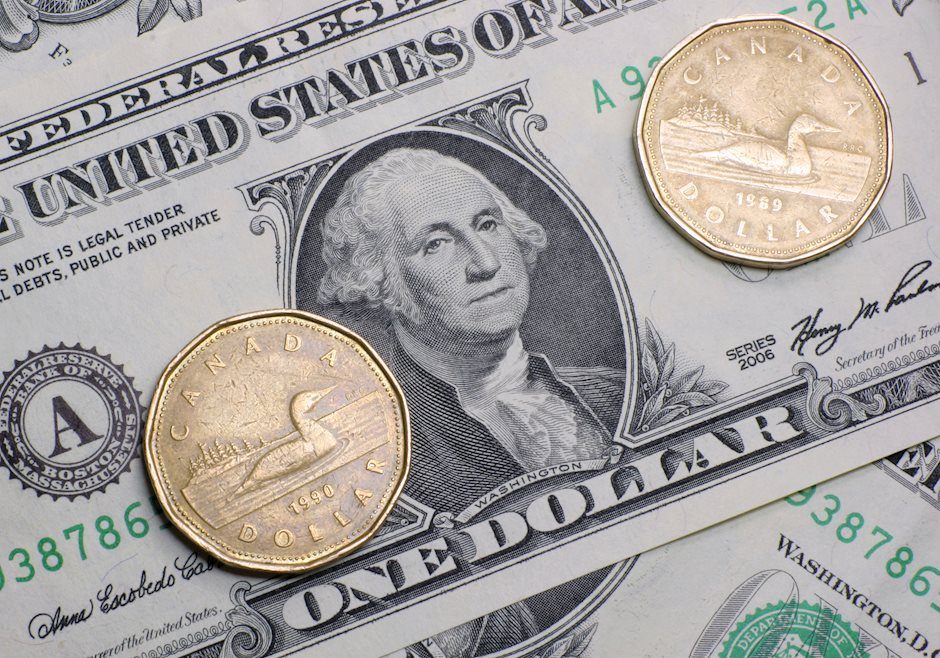USD/CAD remains below 1.3750 despite lower Oil prices, US PPI eyed
- USD/CAD loses ground due to improved risk-on sentiment.
- The US Dollar steadies from the reduced bets for a 50 basis point rate cut by the Fed in September.
- The upside of the commodity-linked CAD could be limited due to lower WTI Oil prices.

USD/CAD edges lower to near 1.3740 during the early European session on Tuesday. However, the US Dollar (USD) holds ground due to decreased expectations for a 50 basis point interest rate cut by the US Federal Reserve (Fed) in September.
According to CME’s FedWatch Tool, the probability of 50 basis points (bps) cut in September has dropped to 50%, down from 85% last week. However, the rate markets continue to price in a 100% chance of at least a 25 bps cut at the upcoming meeting.
Investors will likely focus on the US Producer Price Index (PPI) data set to be released on Tuesday and Consumer Price Index (CPI) figures on Wednesday. Traders are looking for confirmation that price growth remains stable in the United States.
The commodity-linked Canadian Dollar (CAD) could face challenges due to lower crude Oil prices, given the fact that Canada is the biggest crude exporter to the United States (US). West Texas Intermediate (WTI) Oil price halts its four-day winning streak, trading around $78.00 per barrel at the time of writing.
WTI crude Oil prices have edged lower amid concerns about demand, following the Organization of the Petroleum Exporting Countries's (OPEC) reduction in its 2024 demand growth forecast due to weaker expectations in China, according to Reuters.
Additionally, the Bank of Canada (BoC) is anticipated to cut interest rates by 25 basis points at both the September and October meetings, which could weaken the Canadian Dollar.
Canadian Dollar FAQs
The key factors driving the Canadian Dollar (CAD) are the level of interest rates set by the Bank of Canada (BoC), the price of Oil, Canada’s largest export, the health of its economy, inflation and the Trade Balance, which is the difference between the value of Canada’s exports versus its imports. Other factors include market sentiment – whether investors are taking on more risky assets (risk-on) or seeking safe-havens (risk-off) – with risk-on being CAD-positive. As its largest trading partner, the health of the US economy is also a key factor influencing the Canadian Dollar.
The Bank of Canada (BoC) has a significant influence on the Canadian Dollar by setting the level of interest rates that banks can lend to one another. This influences the level of interest rates for everyone. The main goal of the BoC is to maintain inflation at 1-3% by adjusting interest rates up or down. Relatively higher interest rates tend to be positive for the CAD. The Bank of Canada can also use quantitative easing and tightening to influence credit conditions, with the former CAD-negative and the latter CAD-positive.
The price of Oil is a key factor impacting the value of the Canadian Dollar. Petroleum is Canada’s biggest export, so Oil price tends to have an immediate impact on the CAD value. Generally, if Oil price rises CAD also goes up, as aggregate demand for the currency increases. The opposite is the case if the price of Oil falls. Higher Oil prices also tend to result in a greater likelihood of a positive Trade Balance, which is also supportive of the CAD.
While inflation had always traditionally been thought of as a negative factor for a currency since it lowers the value of money, the opposite has actually been the case in modern times with the relaxation of cross-border capital controls. Higher inflation tends to lead central banks to put up interest rates which attracts more capital inflows from global investors seeking a lucrative place to keep their money. This increases demand for the local currency, which in Canada’s case is the Canadian Dollar.
Macroeconomic data releases gauge the health of the economy and can have an impact on the Canadian Dollar. Indicators such as GDP, Manufacturing and Services PMIs, employment, and consumer sentiment surveys can all influence the direction of the CAD. A strong economy is good for the Canadian Dollar. Not only does it attract more foreign investment but it may encourage the Bank of Canada to put up interest rates, leading to a stronger currency. If economic data is weak, however, the CAD is likely to fall.
Author

Akhtar Faruqui
FXStreet
Akhtar Faruqui is a Forex Analyst based in New Delhi, India. With a keen eye for market trends and a passion for dissecting complex financial dynamics, he is dedicated to delivering accurate and insightful Forex news and analysis.
















